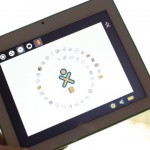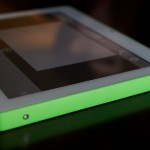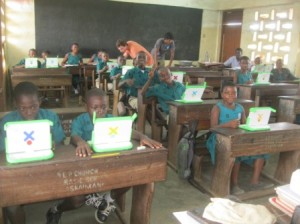Just before the new year, Walter wrote up a quick recap of the history of Sugar design and development.
Our principal partners in Sugar development were a small engineering team from Red Hat and Pentagram. The Red Hat team, under the leadership of Chris Blizzard, an experienced systems engineer, was tasked with leading the software engineering effort behind the development of the Sugar desktop. Lisa Strausfeld, a former MIT Media Lab student, led a team from Pentagram tasked with developing the interaction design and graphical identity of Sugar. In six months, this core group was able to produce a basic framework for Sugar upon which a community of pedagogists and software engineers could build learning activities. The team used an iterative-design process: rapid prototyping of ideas followed by critiques, followed by coding. We went through two to three cycles per week until we reached consensus on a basic framework.







